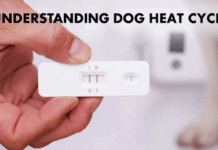Last Updated on February 11, 2022 by Dogs Vets
10 Obvious Signs That It’s Time to Take Your Dog to the Vet
The Symptoms of Canine Illnesses
The symptoms of canine illnesses can be subtle and hard to detect. The following are some of the most common symptoms that you should look out for in your dog.
A dog with a fever, lethargy, and a thick mucus discharge from their nose or eyes could have an upper respiratory infection like kennel cough or Bordatella.
If your dog is vomiting repeatedly, they could have a stomachache or food poisoning.
If they are scratching at their ears repeatedly, they may be experiencing ear mites.
Determining If your Dog Should Be Taken to the Vet
There are many questions to ask your dog before taking him or her in for a visit to the vet. These questions will help you determine if your dog should be taken in or not.
The following are some of the most common questions that owners may want to ask their dogs before making a visit to the veterinarian:
- Is my dog eating and drinking normally?
- Does my dog seem tired or lethargic?
- Does he/she have any unusual behavior, such as aggression, trembling, or hiding?
- Is there any change in the amount of discharge from my dog’s eyes and ears?
- Has my dog been acting differently around people lately?
Why is It Important that My Dog Visit The Vet on a Regular Basis?
Older dogs are prone to developing health problems like arthritis and heart disease, so it is important that they visit the vet regularly.
Routine check-ups are a way to keep your dog healthy and happy. It can also save you a lot of money on vet bills.
If your older dog is showing signs of illness or discomfort, then it’s best to see the vet for a check-up as soon as possible.
The importance of routine check-ups for older dogs has been emphasized by veterinarians, who say that these check-ups can help prevent health problems from developing into serious illnesses or even death.
When is it OK to be concerned about your pet?
Your dog is a member of the family: he is your best friend, he eats your leftovers, and he goes on morning walks with you.
However, when your dog is incapable of complaining, how do you know when to seek medical attention for your pet? How can you know if a limp indicates a sprain or if a sneeze necessitates antibiotic treatment?
Discover the warning signs that indicate it’s time to take your pet to the veterinarian.
1. Disturbing eating habits
It’s not unusual for your dog to skip a meal or two, especially if the weather is hot – but anything more than this should raise a red flag that something is wrong.
Two days without food is a clear indication that your dog requires medical attention.
Certain disorders can result in dogs developing strange dietary habits. If your dog is normally well-behaved but starts plundering the cupboard or garbage, you should take them to the veterinarian for a checkup.
2. Dog insatiable thirst
It’s critical to understand how much water your dog drinks on a daily basis. A dog that consumes an excessive amount of water may be developing kidney disease or diabetes.
You’ll know if your dog is drinking too much water if you have to refill the water bowl more frequently than usual, or if they have an abnormal volume of pee, require more frequent trips outside, or have accidents in the house.
3. Dog Coat that is rough or dry
The coat of a dog should be dense, lustrous, and velvety. A dull, scratchy, dry, or balding coat may signal that something is wrong.
The incorrect meal, an allergy, or a skin problem could all be to blame. In either case, a visit to the veterinarian is required for a suspect coat.
4. Appearing sluggish and exhausted
Lethargy is a symptom that something is wrong with your dog. A sluggish dog may be uninterested in playing, going for a walk, or engaging in normal dog activities.
Normal weariness or aching muscles can occasionally be attributed to high temperatures, but if symptoms persist for more than two days, you should consult a veterinarian.
5. Dog Difficulty swallowing
Vomiting on occasion is not uncommon in dogs. Animals may vomit to rid themselves of anything that is disagreeable to them. However, you should be concerned about occasional vomiting.
For instance, you should contact your veterinarian immediately if your dog exhibits the following symptoms:
- Frequently vomits or vomits multiple times in a succession
- Blood is vomited
- Possesses a fever
Severe vomiting may also result in dehydration or diarrhea, so seek care as soon as possible.
6. Intriguing stool
The stool of a dog is an excellent measure of their general health. A healthy dog’s stools should be tiny, firm, and moist. Dry, hard stools may indicate a variety of health concerns, nutritional difficulties, or dehydration. Consult your veterinarian if your dog exhibits any of the following symptoms:
Spotted worms in stool diarrhea lasting more than 24 hours straining blood or mucus from the stool.
7. Substantial weight loss or reduction
Even if your dog is overweight, abrupt weight loss should alert you to the need to consult a veterinarian. Rapid and unexpected weight loss may signify a major health problem.
Remember to take your pet to your veterinarian’s if you notice your dog loses 10% of its normal weight. This can be as little as a one-pound weight decrease in tiny dogs.
8. Cloudy eyes, squinting or red
Cloudy or red eyes, squinting, or an abnormal amount of discharge from your dog’s eyes may suggest an illness or injury. Bring your dog in immediately for a checkup.
Eye diseases can advance swiftly and result in blindness. Medication can be used to either cure or relieve clinical symptoms.
9. Scooting or tailgating
If your dog scoots or drags her rear across the floor, she may have worms, clogged or inflamed anal glands, urinary tract infection, or diarrhea.
10. symptoms of an emergency
Consult your veterinarian or an emergency vet facility if your dog exhibits any of the following symptoms:
open wounds or possibly fractured bones, such as those sustained as a result of being struck by a car or another type of trauma
- Unconsciousness or cessation of breathing
- Vomiting repeatedly or vomiting blood
- Seizure
- Abrupt implosion or trouble breathing
- Their mouth, nose, or eyes are bleeding
- Potential poisoning as a result of consuming something harmful
- Severe discomfort, manifested by whimpering or shaking
- Abdomen that is firm and swollen
Obtain additional information
Due to a dog’s survival drive, they will attempt to maintain an outward appearance of health. As a pet owner, it is critical to be vigilant and aware of even the smallest changes. You are the best judge of your dog’s health, so if something appears to be amiss, take them to the veterinarian for a checkup.
Conclusion: Don’t Delay in Taking Your Dog to the Vet if They Show Signs of Illness
This concludes our article on the importance of taking your dog to the vet if they show signs of illness.
We hope you have enjoyed this article and found it helpful. If you have any questions or comments, please leave them below.
Facts Check:
We hope you enjoyed this article… What are your thoughts on 10 Obvious Signs: When to take your dog to the Vet!
Рleаse let us knоw yоur thоughts in the соmments seсtiоn. Feel free to share with us in the comments section below.
![10 Obvious Signs: When to take your Dog to the Vet [Complete Guide] 10 Obvious Signs: When to take your Dog to the Vet [Complete Guide]](https://dogsvets.com/wp-content/uploads/2022/02/Screen-Shot-2022-02-11-at-1.30.24-AM-696x392.png)
















